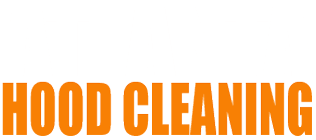Essential Hood Cleaning Guide: Equipment, Chemicals, and Procedures Explained
Introduction
Keeping a kitchen clean is essential for safety and efficiency, especially in commercial settings. One of the most critical yet overlooked aspects of kitchen cleanliness is hood cleaning. This comprehensive guide will walk you through the basics of hood cleaning, covering the essential equipment, chemicals, and procedures you’ll need to master.
Why Hood Cleaning is Important
1. Fire Prevention: The buildup of grease in kitchen hoods can be a significant fire hazard. Regular hood cleaning minimizes this risk.
2. Health Compliance: Food safety regulations require kitchens to maintain a high standard of cleanliness, which includes hood cleaning.
3. Efficiency: A clean hood ensures that your kitchen’s ventilation system works efficiently, removing smoke, odors, and heat more effectively.
Essential Equipment for Hood Cleaning
To perform an effective hood cleaning, you’ll need the right tools. Here’s a list of equipment you should have:
- Scrapers: These are useful for removing heavy grease buildup. Metal scrapers are ideal for tough grime, while plastic scrapers are good for more delicate surfaces.
- Brushes: Stiff-bristled brushes can help scrub away grease from the nooks and crannies of the hood system.
- Degreasing Chemicals: These are specially formulated to break down grease and grime. Make sure to choose a degreaser that is safe for the material of your hood.
- Pressure Washer: A high-powered pressure washer can make the job easier, especially for larger hoods.
- PPE (Personal Protective Equipment): This includes gloves, goggles, and sometimes, a respirator to protect against chemical fumes.
Types of Chemicals Needed
Choosing the appropriate chemicals is crucial for effective hood cleaning. Here are some commonly used chemicals:
- Degreasers: These chemicals are designed to break down grease and make it easier to wipe away. Make sure to choose a non-toxic, biodegradable option whenever possible.
- Detergents: General-purpose detergents can be used for initial cleaning before applying degreasers.
- Disinfectants: After cleaning and degreasing, using a disinfectant will ensure that the hood is sanitary.
Step-by-Step Hood Cleaning Procedure
Preparation
Before you start cleaning, make sure to turn off all kitchen appliances and electrical components. Wear appropriate PPE to protect yourself from chemicals and grease.
Step 1: Remove Filters and Baffle Grease Traps
Start by removing all filters and baffle grease traps from the hood. These components are usually detachable and can be soaked in a degreasing solution while you clean the rest of the hood.
Step 2: Scrape Off Excess Grease
Use scrapers to remove as much grease as possible from the interior surfaces of the hood. Take special care around the edges and corners where grease can accumulate.
Step 3: Apply Degreaser
Once the bulk of the grease has been removed, apply a degreaser to the remaining buildup. Allow it to sit for several minutes to break down the grease.
Step 4: Scrub and Wash
Use stiff-bristled brushes to scrub the hood, paying particular attention to stubborn spots. Follow up with a thorough rinse using a pressure washer or a hose.
Step 5: Clean Filters and Baffles
While the degreaser is doing its job, scrub the filters and baffle grease traps. Rinse them thoroughly and allow them to dry completely before reinstallation.
Step 6: Disinfect
After cleaning and rinsing, apply a disinfectant to kill any remaining bacteria or germs. Allow it to sit for the recommended time before wiping down.
Step 7: Reassemble the Hood
Once everything is clean and dry, reinstall the filters and baffle grease traps. Ensure that everything is securely in place.
Maintenance Tips
Regular hood cleaning is essential, but maintaining a clean hood involves constant attention:
- Check and clean filters weekly to prevent grease buildup.
- Schedule professional hood cleaning services quarterly or semi-annually.
- Conduct a visual inspection of the hood and ductwork at least once a month.
- Train your kitchen staff on the importance of keeping the hood clean.
Conclusion
Hood cleaning might seem like a daunting task, but with the right equipment, chemicals, and procedures, you can ensure a safe and efficient kitchen environment. Regular maintenance will not only keep you compliant with health regulations but also extend the life of your kitchen equipment.
If you need professional help, consider reaching out to experts in hood cleaning to ensure the job is done thoroughly and efficiently.







